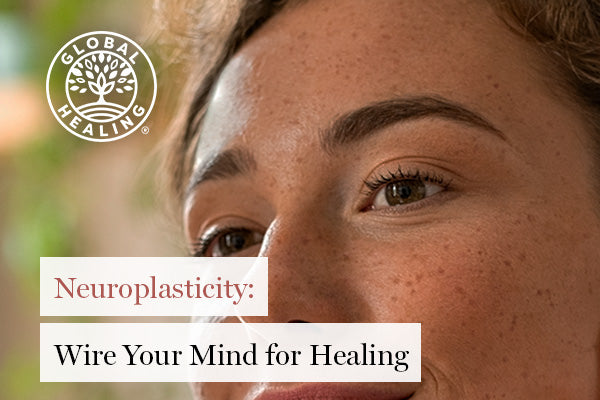Neuroplasticity: Wire Your Mind for Healing

Every second, billions of neurons, or nerve cells, communicate so you can think, breathe, move, see, smell, taste, feel... Your nervous system essentially shapes your existence – the way you perceive and interact with the world around you.
What makes neurons so incredible, however, is the fact that they're plastic. Not the kind of toxin-filled plastic that litters our environment (although recent research speculates our total brain mass might be 0.5% microplastics at this point) [1].
What we're talking about here is neuroplasticity. "Plastic" means "easily shaped or molded." Neurons have the incredible ability to create new connections, repair themselves, and adjust to changes in their environment [2].
Neuroplasticity and Self-Healing
Neurons are the tiny cells that make up your nervous system. Each neuron has dendrites to gather signals, axons to send them, and synapses that act as connection points between cells. These tiny but powerful cells constantly adapt and evolve, forming intricate pathways that allow you to learn, grow, and heal.
Neurons' ability to learn, adapt, and regenerate is how we can achieve things that seem impossible, like regaining mobility after a brain injury.

Researchers break down the process into three phases:
Within the first 48 hours of neuron death, the brain seeks alternate neural networks so it can keep functioning.
In the following weeks, the brain stimulates cortical pathways and starts making new synaptic connections.
Weeks to months later, the brain continues to form new axon sprouts, remodeling and reorganizing itself around the dead neurons [2].
Neuroregeneration happens automatically, but there are things you can do to promote it. For example, research has found that simply practicing mindfulness (body scanning, yoga, and tuning into the five senses while meditating) for 30 minutes a day significantly increases gray matter (tissue with high neuron concentration) in the left hippocampus, the part of your brain responsible for learning and memory, after two months [3].
But neuroplasticity is not just a scientific concept. It also proves our capacity to overcome adversity, rediscover joy, and rewrite our stories. It all depends on the world you create for yourself.
Incredible Examples of Neuroplasticity
Mariam Paré, an art student, became quadriplegic in 1996. She was 20 years old. Although her life changed drastically, her passion for art remained the same, and she learned how to control a paintbrush with her mouth. She found a group called Mouth and Foot Painting Artists, which she says, "uplifted and empowered" her. She still creates stunning paintings in her home studio today [4].
In the 2020 Olympics, Simone Biles, the third most decorated Olympic gymnast of all time, struggled with her mental health. She uncharacteristically flew out of bounds during a qualifying event and faltered during a team final. She decided to pull out of several events that year to prioritize her well-being. She returned to the Olympics in 2024, expressing that she had rediscovered joy in gymnastics. That year, she won three gold medals and one silver [5].
In 2018, Karlynn McCarrell was 396 pounds, prediabetic, and in the hospital with a 95% blocked cardiac artery. Although he had a family history of heart issues, he decided to fight the odds by adopting a whole-food, plant-based diet and exercising. By his 30-day follow-up appointment, he had lost weight, his blood pressure normalized, and his blood lipid profile improved. After two years of healthier living, Karlynn's doctor said he could discontinue all medications. Previous markers of heart damage were no longer visible on his heart scans [6].
No matter the obstacles we face – whether physical, mental, emotional, or genetic – our brains and bodies are designed to adapt, heal, and thrive.
These stories remind us that the path to change begins with the courage to take one step, the determination to keep going, and the belief that we are capable of extraordinary transformations.
How Your Environment Affects Neuroplasticity
Although neuroplasticity allows us all to improve our minds, habits, and lives, things we can and cannot control may prevent us from realizing our potential.
Your neurons respond to their environment. So, as positive as neuroplasticity can be, it can be equally negative.
For instance, chronic stress can atrophy dendrites, decrease spine density, and reduce grey matter in the prefrontal cortex (your "personality center"). Over time, this can lead to cognitive, emotional, and behavioral dysfunctions, increased inflammation, and a weakened immune system [7].
Excessive screen time can thin the cerebral cortex and hinder memory, decision-making, and problem-solving [8]. For adults, this can turn into early-onset dementia, IQ decline, learning impairments, and mental health concerns [9]. For teens – whose brains are still developing – overusing smartphones forms similar neural pathways as seen in people with substance addiction. A smartphone addiction can lead to depression, anxiety, and insomnia [10].
Change can be difficult, especially if the neural pathways in your brain are so strong that an action or feeling seems "hard-wired" into your personality or lifestyle. However, you can always harness the power of neuroplasticity to work toward self-healing.
How to Use Neuroplasticity for Healing
Cleanse
Make a conscious effort to detoxify your life of things that are proven to hinder neuroplasticity. Reduce screen time, set boundaries with people and situations that invite stress into your life constantly, and remove foods from your diet that trigger unhealthy biological responses (ultra-processed foods, for example [11]).
Revive
Nourish your brain with high-quality foods and supplements. Folic acid and vitamins B6 and B12 are found to be critical for hippocampal neurogenesis in adults. Vitamins E and C are antioxidants that can protect neurons from degeneration. Omega fatty acids can improve memory and overall cognitive function [11].
Balance
Incorporate brain-healthy activities into your daily routine. Physical activity is proven to be one of the most effective ways to improve learning and memory for people of all ages. Active adults process information faster, have better memory recall, and are less likely to develop dementia. Active children and adolescents have greater hippocampal volumes, which translates to better academic performance [12].
You Have the Power to Heal
Your body is designed for wellness. With the right knowledge and consistent effort, you can reclaim your health and turn your digestive system into a self-healing machine.
Your Body Is the Medicine is a Global Healing series that dives into eight self-healing systems, how they work, and what you can do to reignite your innate healing abilities.
In part six of the series, we dive into the respiratory system and how it plays a key role in your body's overall healing journey.
†Results may vary. Information and statements made are for education purposes and are not intended to replace the advice of your doctor. If you have a severe medical condition or health concern, see your physician.
References (12)
- Campen, M., Nihart, A., Garcia, M., Liu, R., Olewine, M., Castillo, E., Bleske, B., Scott, J., Howard, T., Gonzalez-Estrella, J., Adolphi, N., Gallego, D., & Hayek, E. E. (2024). Bioaccumulation of Microplastics in Decedent Human Brains Assessed by Pyrolysis Gas Chromatography-Mass Spectrometry. Research Square, rs.3.rs4345687. https://doi.org/10.21203/rs.3.rs-4345687/v1
- Puderbaugh, M., & Emmady, P. D. (2023, May 1). Neuroplasticity. National Library of Medicine; StatPearls Publishing. https://www.ncbi.nlm.nih.gov/books/NBK557811/
- Hölzel, B. K., Carmody, J., Vangel, M., Congleton, C., Yerramsetti, S. M., Gard, T., & Lazar, S. W. (2011). Mindfulness practice leads to increases in regional brain gray matter density. Psychiatry Research: Neuroimaging, 191(1), 36–43. https://doi.org/10.1016/j.pscychresns.2010.08.006
- Vitali, M. (2017). Meet Mariam Paré, a Rare Mouth Painter Who Didn't Let Paralysis Stop Her From Becoming an Artist. WTTW News. https://doi.org/1002587/c2n_sitewide_300x250_3
- Macur, J. (2024, July 28). Simone Biles Is Done Being Judged. The New York Times. https://www.nytimes.com/2024/07/28/world/olympics/simone-biles-olympic-gymnast.html
- McCarrell, K. (2024, November 8). After Needing a Stent at 32, I Went Plant-Based, Lost 200 Pounds, and Reversed My Heart Disease. Forks over Knives. https://www.forksoverknives.com/success-stories/after-stent-at-age-32-i-went-plant-based-lost-200-pounds-reversed-heart-disease/
- Mariotti, A. (2015). The effects of chronic stress on health: new insights into the molecular mechanisms of brain–body communication. Future Science OA, 1(3). https://doi.org/10.4155/fso.15.21
- Xu, C., Cao, Z., Lu, Z., Hou, Y., Wang, Y., & Zhang, X. (2024). Associations Between Recreational Screen Time and Brain Health in Middle-Aged and Older Adults: A Large Prospective Cohort Study. Journal of the American Medical Directors Association. https://doi.org/10.1016/j.jamda.2024.03.010
- Manwell, L. A., Tadros, M., Ciccarelli, T. M., & Eikelboom, R. (2022). Digital dementia in the internet generation: excessive screen time during brain development will increase the risk of Alzheimer's disease and related dementias in adulthood. Journal of Integrative Neuroscience, 21(1), 028. https://doi.org/10.31083/j.jin2101028
- Seo, H. S., Jeong, E.-K. ., Choi, S., Kwon, Y., Park, H.-J. ., & Kim, I. (2020). Changes of Neurotransmitters in Youth with Internet and Smartphone Addiction: A Comparison with Healthy Controls and Changes after Cognitive Behavioral Therapy. American Journal of Neuroradiology, 41(7), 1293–1301. https://doi.org/10.3174/ajnr.A6632
- Poulose, S. M., Miller, M. G., Scott, T., & Shukitt-Hale, B. (2017). Nutritional Factors Affecting Adult Neurogenesis and Cognitive Function. Advances in Nutrition: An International Review Journal, 8(6), 804–811. https://doi.org/10.3945/an.117.016261
- Phillips, C. (2017). Lifestyle Modulators of Neuroplasticity: How Physical Activity, Mental Engagement, and Diet Promote Cognitive Health during Aging. Neural Plasticity, 2017, 1–22. https://doi.org/10.1155/2017/3589271
Posted in: Cleansing,

Dr. Edward Group, DC
FOUNDER | HEALER | ADVOCATEDr. Group, DC is a healer and alternative health advocate, and an industry leader and innovator in the field of natural health who is dedicated to helping others. He is a registered doctor of chiropractic (DC), a naturopathic practitioner (NP), and proud alum of Harvard Business School and MIT Sloan School of Management. Dr. Group, DC is the founder of Global Healing – a mission and vision he has shared through best-selling books and frequent media appearances. He aims to spread his message of positivity, hope, and wellness throughout the world.













